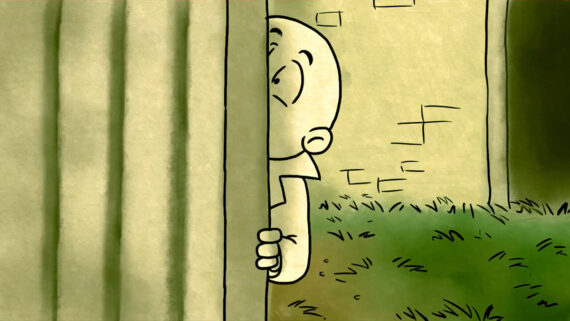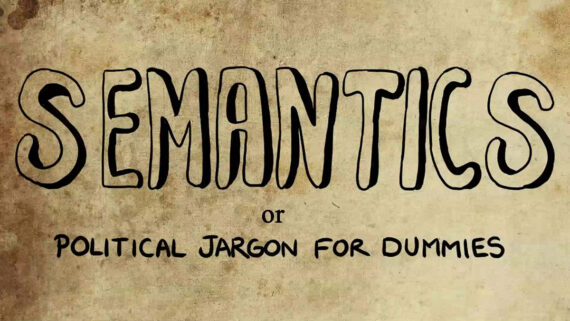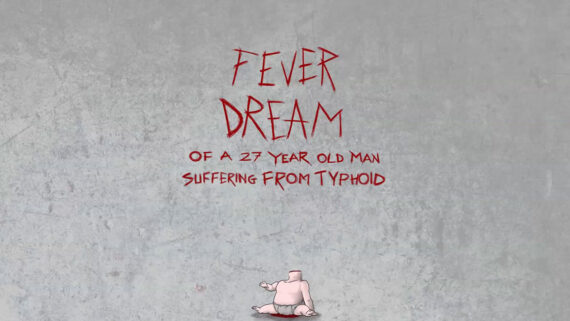In Conversation with the ‘Accidental Designer’ : Aroop Dwivedi
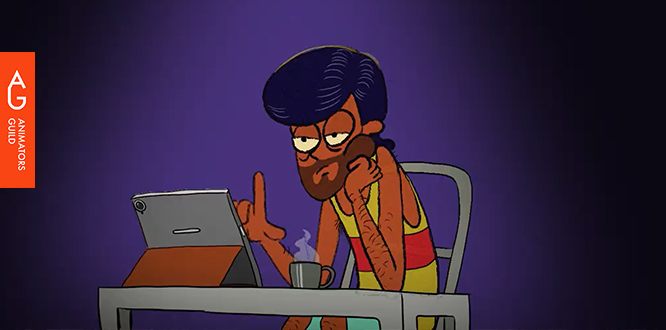
Strolling down the corridors of MITID's academic block, you're likely to cross paths with none other than Professor Aroop Dwivedi. Aroop, with his infectious jubilance, spends his days mentoring students and immersing himself in his independent film projects; with his latest endeavor being "Kamzakhila." In this feature, we delve into Aroop's career path and explore the creation of "Kamzakhila."
“I do not identify much as a designer, it is pretty strange the kind of background that I come from”, says Aroop.
Hailing from a commerce background, Aroop made a shift to the arts following his graduation. His educational journey was a diverse mix of skills. Initially, he felt pressured to make decisions based on societal expectations, akin to the "Sharma ji ka ladka" syndrome. However, he soon found the courage to pursue his true passion for animation at Hearts Animation Hyderabad.
I never formally learned design - so I guess I am illustrator and animator first and then a Designer... an accidental designer
Blessed with great mentorship early in his career, Aroop developed a keen interest in developing his own IP’s. Transitioning into an academic position, he soon found the time and resources to pursue his own films.

Aroop’s film “Happy Days”; a social satire about human greed and how it fogs common sense.
Aroop's film, "Dhonsiya," which means "Bully," narrates the tale of a hapless 8-year-old named Gulshan, who is enduring one of the worst phases of his life. However, as the story unfolds, things begin to change for him in a manner that will have far-reaching consequences.
Aroop says,” I got into academics and started helping students make their films until I realized the amount of work I was doing to help them was almost equivalent to making my own films, so I thought I will give it a shot and try and make my own film.”
"Semantics," directed by Aroop, simplifies political terminology through captivating visuals and narratives.
Film by Aroop which revolves around the Fever Dream of a 27 year old man suffering from typhoid.
A piece about Semiotics by Aroop.
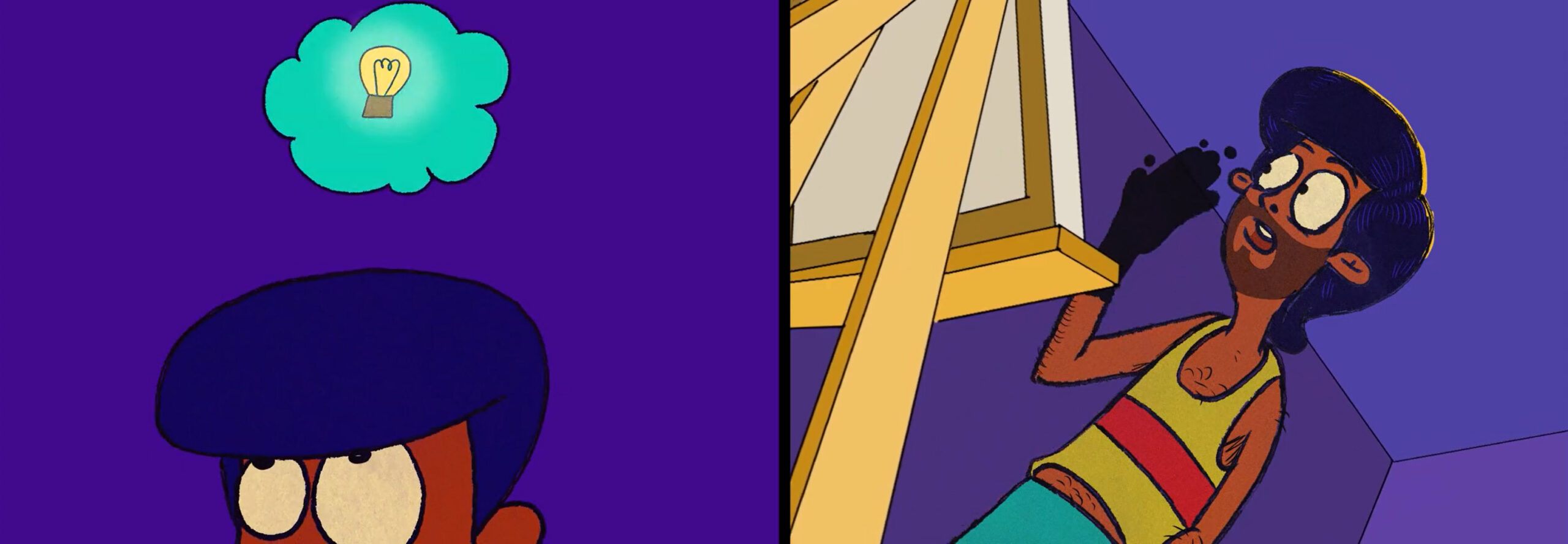

It was this very act of creating -more precisely inability to- create films that formed the seed of “Kamzakhila”.
I think I have developed an unhealthy addiction to making animation films to a degree that I feel various level of anxiety and restlessness when I am not making them
Channeling the feelings of despair, frustration and self-loathing that artists encounter when grappling with the idea of creating a film but struggling to actualize it—commonly known as artist's block—Kamzakhila was conceived. While talking to co-artist Devyansh Gandhi, he soon realized that it was a common experience for most artists.

Set in Zagrothebia, an unknown island nation south of Madagascar, where the Greeks would send their prisoners and most recently a state that had denounced communist monarchy of last 200 years(allegedly Karl Marx was inspired from them when he wrote his critiques), the film is in Ruhishush, an indigenous language only used in that part of the world. To place the country on the global map, the liberal Sultan Kubulkush has encouraged “Kamzakhila” their first Animation film.
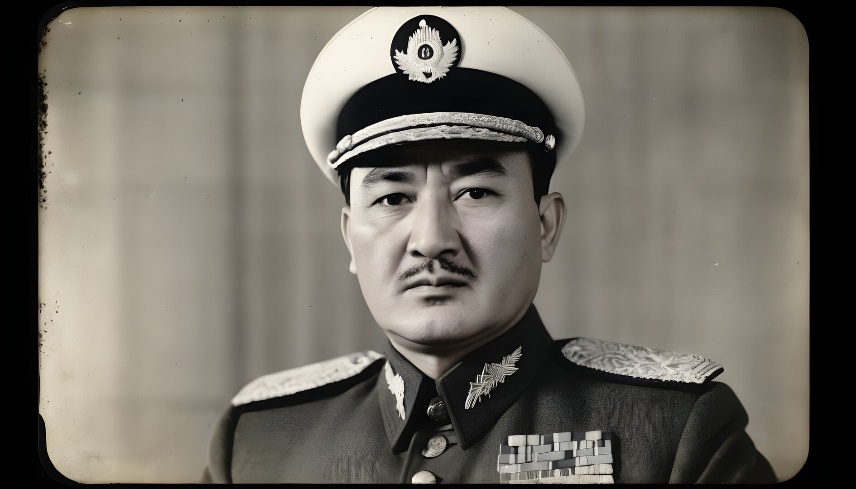

Kamzakhila do not have a literal translation, it’s a soft slang which roughly translates to the mutilated sinus of a horse or a goat. Aroop says,” Like we say ‘goddamnit’ or ‘crap’, they say ‘kamzhakila’.”
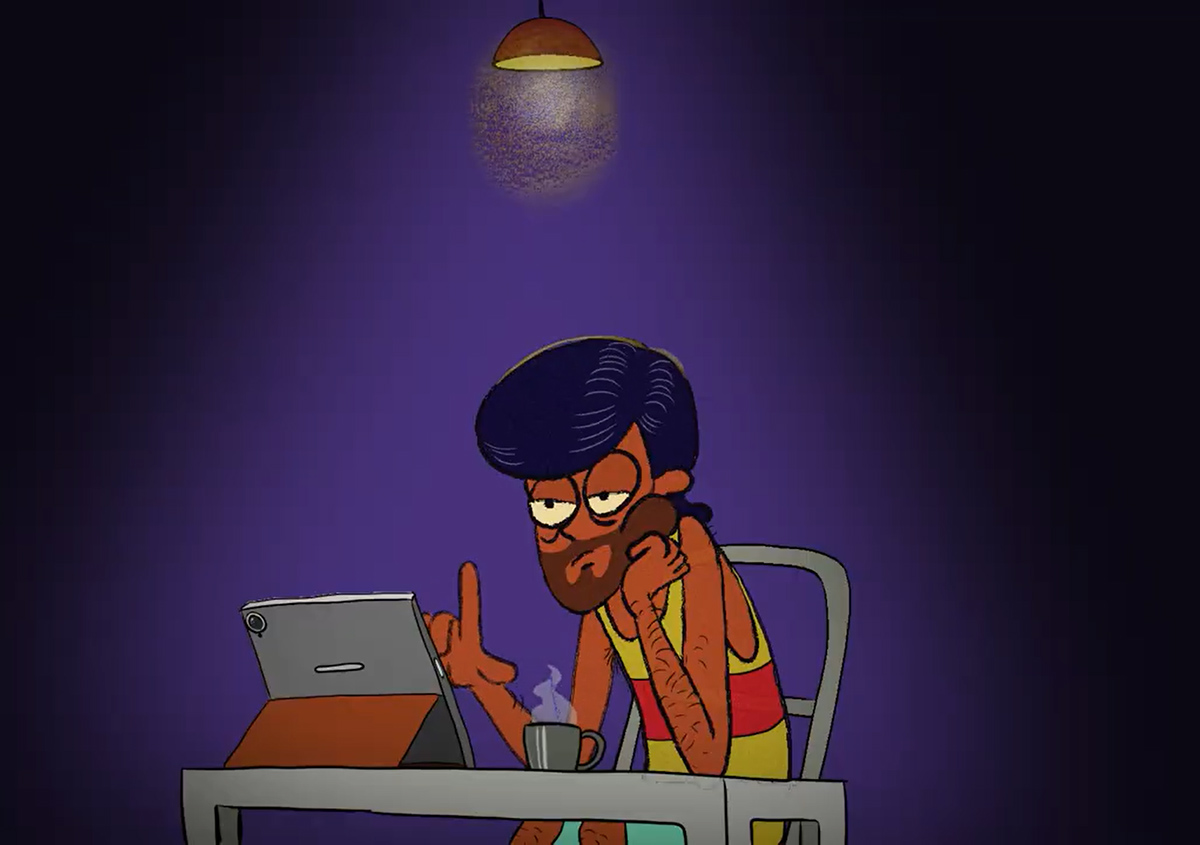
Despite facing constraints in translating the piece from Ruhishush to French and subsequently from French to English, alongside the added challenge of an obligatory end credit song to their dismay, this film was an organic exploration of the craft devoid of any rigid preconceptions.

Please don’t hate me for saying this but I do not like preproduction- I avoid preproduction- I feel it is something that gets between me and animation.
Drawing inspiration from the psychedelic animation movements, characterized by individual artistic voices and a departure from the conventional confines of the animation process, Aroop’s process was simple. “Before I go to sleep I will decide what I want to animate tomorrow... then I will wake up and animate it”, he says.
After finishing around 8-10 shots, he organizes them on the timeline, assessing their narrative flow and addressing any inconsistencies by creating intermediary shots to seamlessly connect the narrative. Once the edit was completed, he worked with collaborators Dev Shah for sound design and voice over artist Pranav Allageti to bring the film to fruition. This workflow granted Aroop the flexibility to allocate ample time and delve into diverse creative paths according to his discretion.
Behind the scenes of Kamzakhila
He adds,” The entire film is montage based and it lacks continuity till the final act kicks in, so it can be edited in more ways than one. Also the voice over is a very rare language that anyone hardly understands so you can shuffle around the audio as you please (the voice over track).Since no one understands what is being said, you can also change the subtitles and create completely new films out of the same material.”

Though the primary aim of the film was to highlight Khumuz Shokat, the Zargoth artist/animator on whom the film is centered, it also provides solace to artists grappling with creative blocks, reassuring them that they are not alone in their journey.
Don’t kill yourself if you don’t succeed once, keep trying until you are sure you are a failure and then change your career and get into tele calling... or maybe join some university... to study art formally... just don’t kill yourself
Whenever Aroop finds himself in such a rut he says, “I indulge in other activities- backpack, illustrate, read a book, watch films, start a Pink Flood hate club, cook, try to learn any new skill.Anything that can distract me, and slowly I find my way back on the saddle.”
Talking about his role as a faculty at MITID, he says, it’s his favorite time of day! He says, “The energy in these kids is infectious. They are so good that in order to justify my position of someone who they are supposed to look up to, I have to be better than them and stay ahead of the curve”.
The more I work, the better I get at it. So it’s all thanks to these kids- a lot of them you know already - that I got good at what I do.
Juggling his personal projects while mentoring, Aroop reflects, "It really helps that I make a living out of what I love doing. If tomorrow I have no work, I will still animate... because that's what I live for." Furthermore, the support he receives both at home and in his professional environment enables him to allocate time for his personal endeavors
Aroop identifies the current challenge in animation design education as the scarcity of good mentors. He elaborates, "They [the students] are so intelligent that learning is something they can do on their own if you give them a topic and a timeline. As mentors, we need to go beyond that; we need to inspire them and cultivate their originality."
Teachers control... mentors, on the other hand, allow you to explore, fail, and learn. You'll never learn to deal with failure if the objective from the start is to avoid it...You see the irony there .. right..??
He adds,”Mentoring will play a very divisive part when these kid go through their first crisis, when they lose their first job, when their content is plagiarized, or when they are in Thailand and realize they have hooked up with wrong sex or when they are not paid for their freelance work... how they respond in such situations.”
Have fun... there will be tough times... there will be times when you will be miserable, over worked and underpaid... but that is how capitalism works, almost everyone in a private system is over worked and underpaid... but not everyone gets to create life out of thin air... relish that.
As for the future he believes that the evolution of animation will be propelled by the distribution system. He adds,”Who would have thought that we would be producing content in 1:1 or 9:16 aspect ratio and yet here we are.”
As the industry shifts towards storytelling in 90-second reels, a departure from the traditional 22-minute episode format, he remains optimistic about the continued growth of original content. Additionally, he believes the adoption of open-source applications eliminate the need for hefty licensing fees, enabling animators to establish small studios with lower overhead costs.
On that note we come to end of this feature with Prof.Aroop Dwivedi. We thank him for his time and wish him all the best for the film screening of “Kamzakhila” and more! Till then, “Shorar Zee Zargoth”.
Aroop’s hot take on Pink Floyd:
I think they do some music work like a music band or something, I heard one song that provokes kids to revolt against the system, it’s called “ throw another kid in the wall” or something, I think it is a very toxic song and such things should not be done... being someone who makes a living out of teaching, I condemn them... but they sound lot acceptable when I am high.. but I still prefer Mr. Rajkumar’s ‘you are a doctor, I am a driver’ honestly that’s what music should be.
You can find the links to Aroop Dwivedi’s work & film “Kamzakhila” on the channels below

Aroop Dwivedi

Kamzakhila


